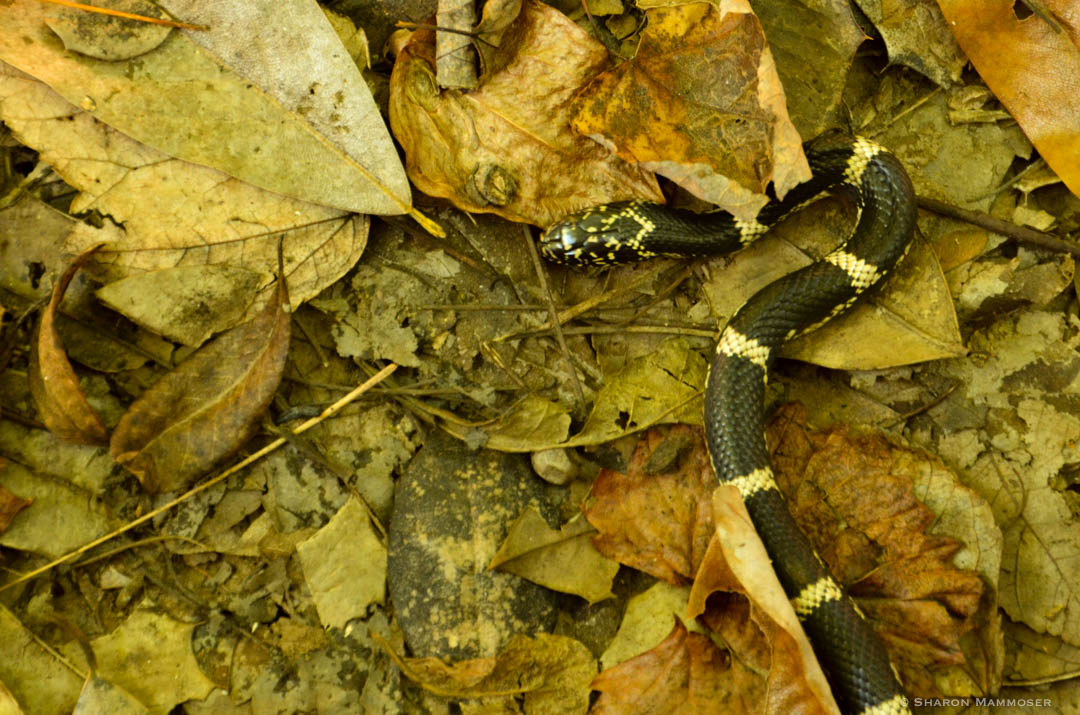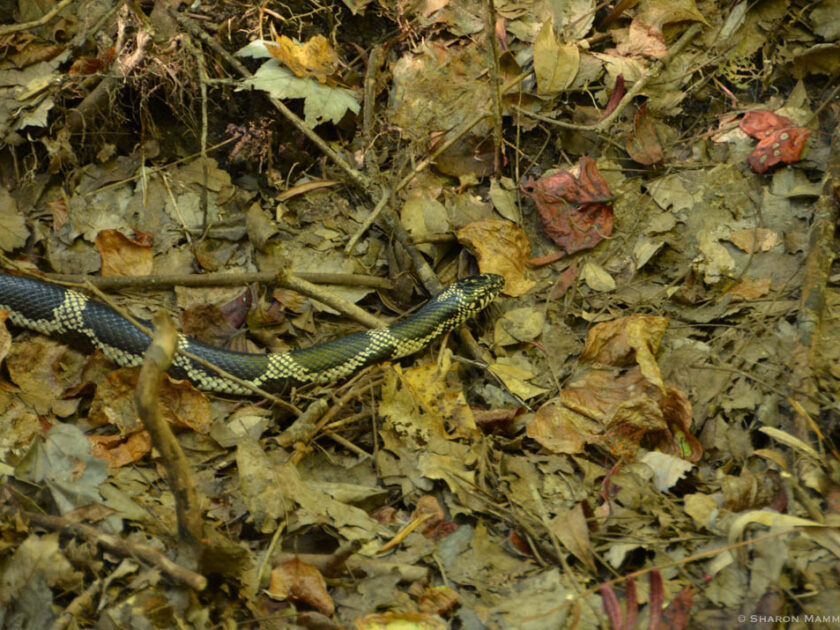A handful of people recognized the snake from last week’s puzzler as an eastern king snake (Lampropeltis getula). This is a non-venomous snake that is found throughout eastern North America. They are often found near water. Have you ever seen one in a field near you?

These snakes are often called chain snakes because the pale lines across its black body often resemble a chain. The lines can be pale yellow or whitish. Know why they’re called king snakes? It’s because in the snake world, they are king– because they eat other snakes, including venomous snakes. They are not hurt by the venom of other snakes. Also on their menu are birds, bird eggs, lizards, rodents, frogs, turtle eggs, and other small animals. They kill their prey by squeezing it to death– also know as constriction. They can be 36-60 inches long, and like garters and many other snakes, will give off a terrible smelling musk when disturbed. This is a defense mechanism that might make a predator drop them–after all who wants to eat something so smelly and repulsive?! The snake might get to live another day.
Did you know other snakes besides rattlesnakes vibrate their tails? Some other snakes do this to trick possible predators– no one wants to mess with a rattlesnake! I’ve seen a black rat snake do this and eastern king snakes will do it too. Sometimes when they are in dried leaves and vibrate their tails, it sounds pretty convincing.
These snakes lay eggs in early summer– from 3-29. Females put the eggs in rotting logs, rock crevices, in leaf litter or underground in old animal burrows or dens. Baby snakes hatch out later in August or September and resemble adults.


